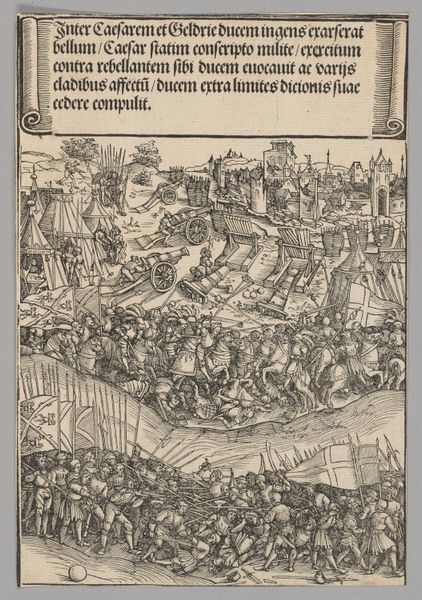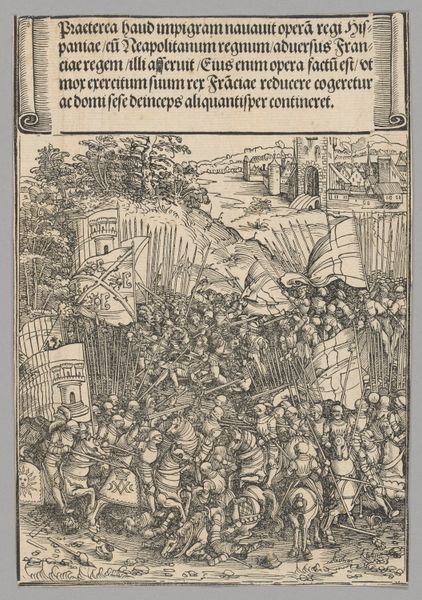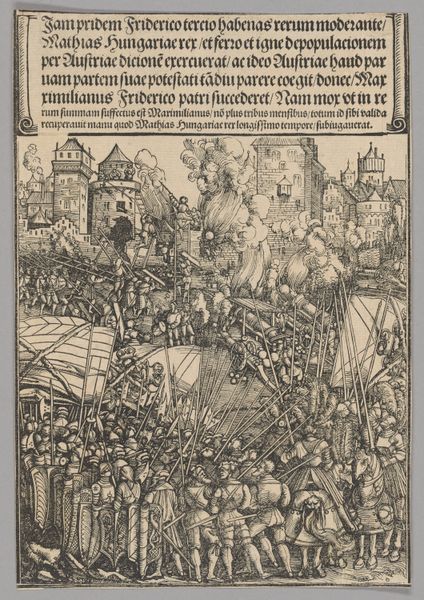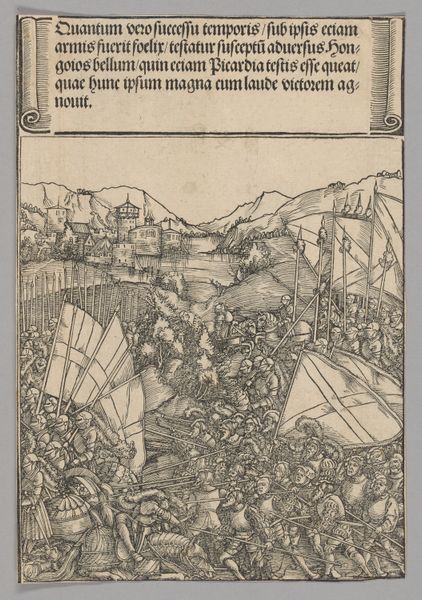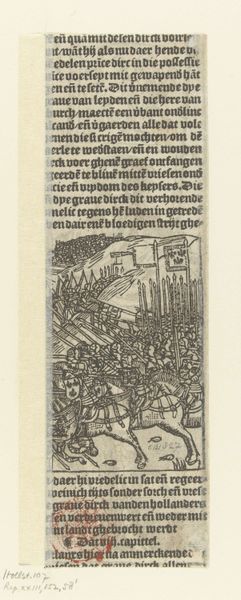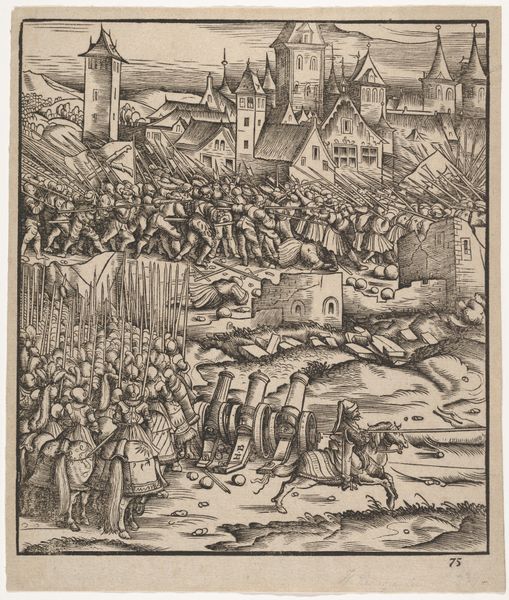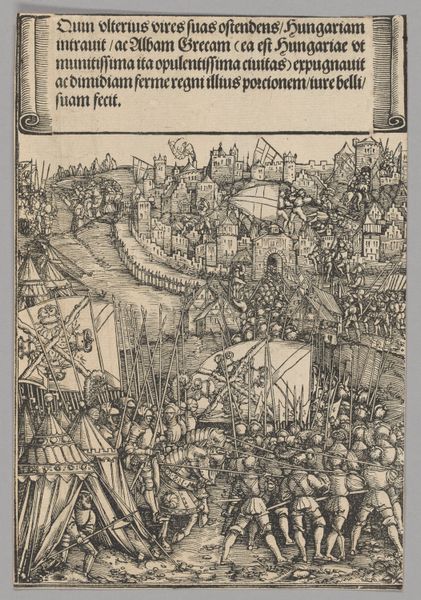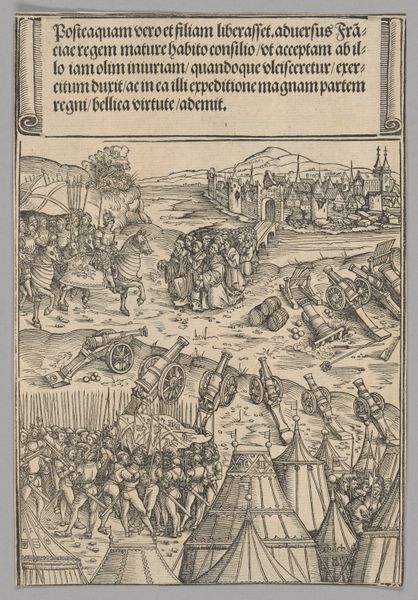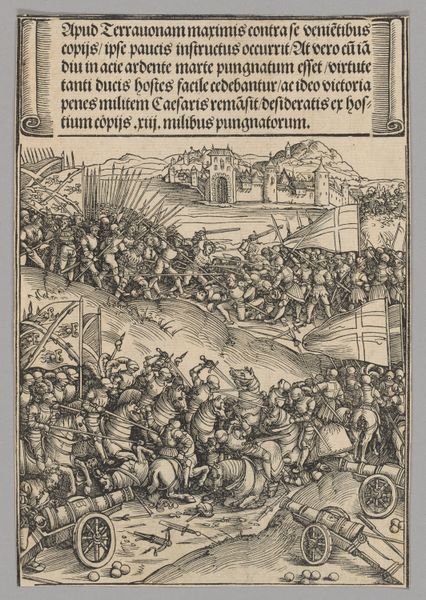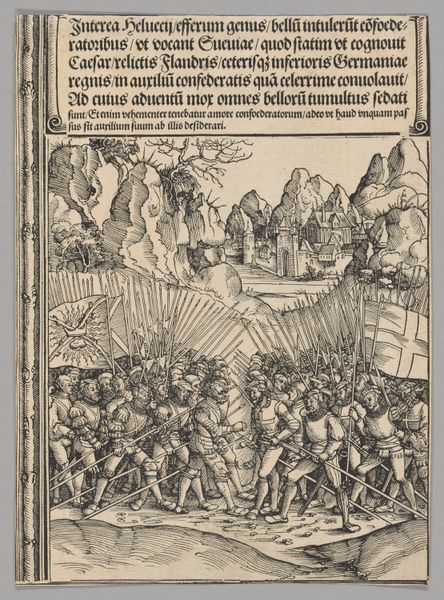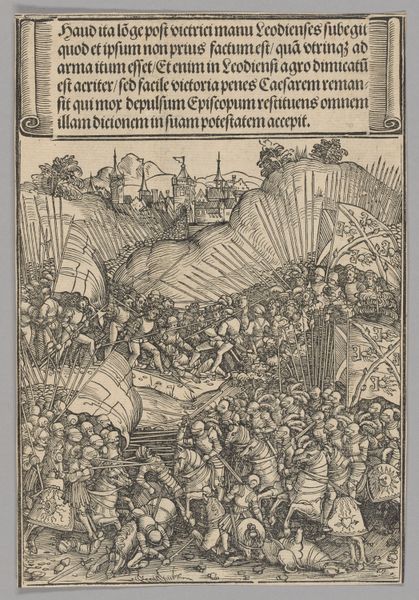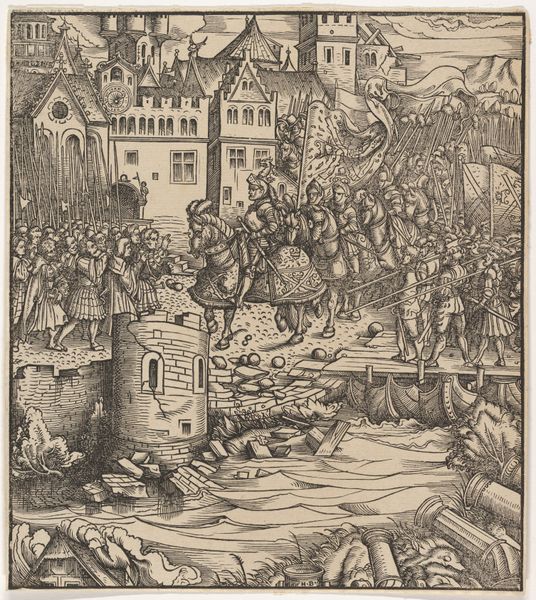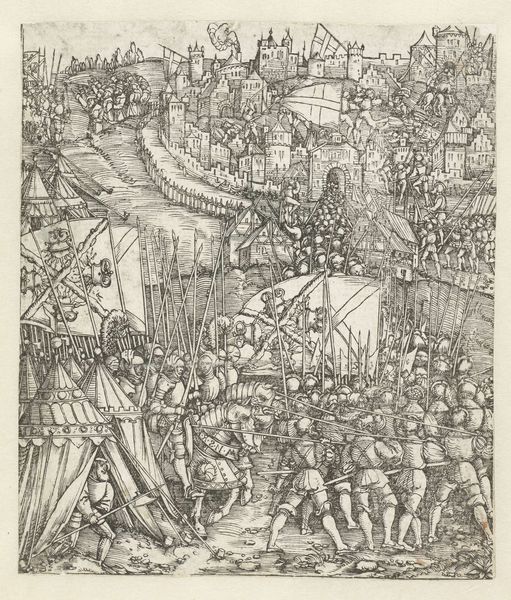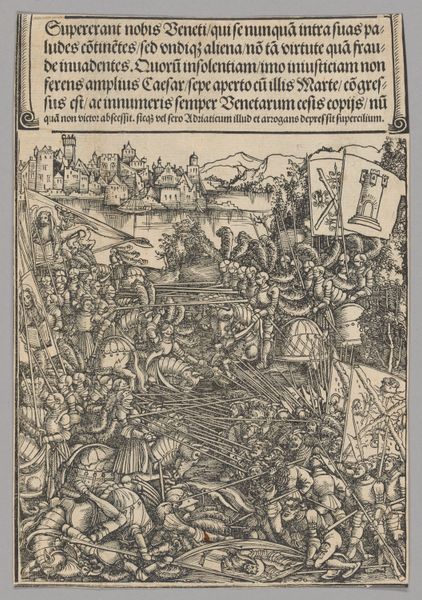
Second Flemish Rebellion, plate 10 from Historical Scenes from the Life of Emperor Maximilian I from the Triumphal Arch c. 1515 - 1520
0:00
0:00
drawing, print, paper, ink, woodcut
#
drawing
#
narrative-art
# print
#
paper
#
ink
#
woodcut
#
history-painting
#
northern-renaissance
Dimensions: 223 × 150 mm
Copyright: Public Domain
Curator: Look at this intriguing print, “Second Flemish Rebellion, plate 10 from Historical Scenes from the Life of Emperor Maximilian I from the Triumphal Arch,” made around 1515-1520 by Hans Springinklee. It’s currently held at The Art Institute of Chicago, a woodcut using ink on paper. Editor: It has a remarkable density of line, doesn’t it? Almost overwhelming at first glance, that mass of figures compressed into a shallow foreground. The use of stark contrast really amplifies the chaos of battle. Curator: Indeed. Springinklee meticulously renders the conflict. Consider the iconography embedded in the image – the massed pikes evoking a forest of righteous indignation, while the broken figures at the front hint at defeat, suggesting both earthly struggle and a fall from grace, given the historical context of the Habsburg empire’s struggles to maintain power in the Netherlands. Editor: The compression, though… it's almost claustrophobic. It denies the eye any real respite. It’s interesting how the text banner at the top adds to this effect. I wonder about its intention to shape our interpretation through semiotic inscription? Curator: Exactly! The text provides context, of course—reinforcing the emperor’s narrative and justifying his actions against those resisting. Visually, the soldiers are not individualized heroes. Springinklee instead creates archetypes representing the strength of the Emperor’s army and alludes to universal ideas of power, rebellion, and divine right. Editor: Despite the chaos, notice how he’s orchestrated it all, funneling the action towards that central gate in the background? A masterful composition, directing the viewer's eye amidst the seemingly disordered scene, subtly manipulating the chaos. Curator: It is more than just observation, it’s a potent visual declaration. I think of the image serving to warn of consequences to defying imperial authority, reflecting period sensibilities towards empire and legacy. Editor: The visual and conceptual layering in this piece speaks volumes. Thank you for shedding light on the embedded messages of the era and its psychological manipulations! Curator: The artist definitely captures something essential here about that period’s perception of political struggle. Hopefully, this gives everyone insight into the artistic approach!
Comments
No comments
Be the first to comment and join the conversation on the ultimate creative platform.
